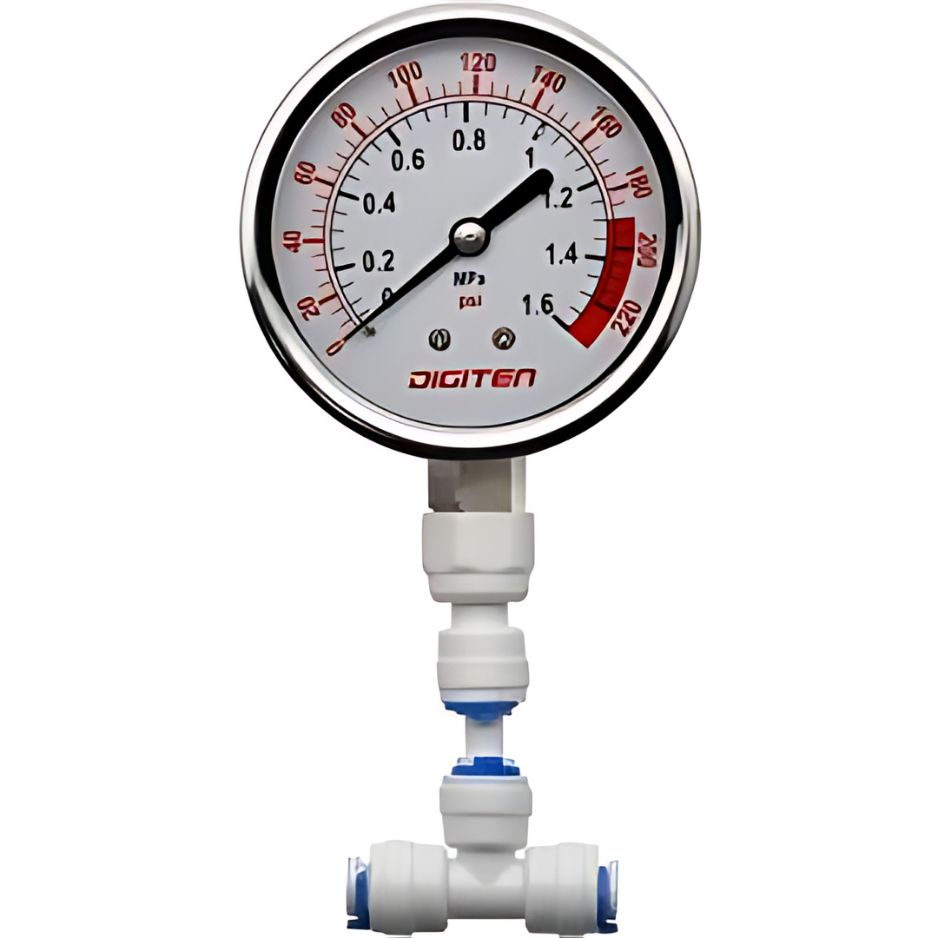Water Pressure Gauge Meter 1-100 PSI
- Regular price
-
$13.99 - Regular price
-
- Sale price
-
$13.99
Couldn't load pickup availability
- Adequate PSI is crucial for correct operations for any reverse osmosis unit.
- A pressure gauge is perfect for monitoring your water pressure levels and in making pressure drops apparent, which helps in knowing when to replace your pre-filters.
- Comes pre-assembled with 1/4" quick connect fittings for a quick and easy installation before the RO membrane
- Excellent for all types of reverse osmosis applications, such as under-sink drinking, salt water aquariums & hydroponics to name a few
We'll add it onto Any of our Systems that you are purchasing. Please purchase at the same time as the system you would like us to install it on.
Pressure Gauge :
- Adequate PSI is crucial for correct operations for any reverse osmosis unit.
- A pressure gauge is perfect for monitoring your water pressure levels and in making pressure drops apparent, which helps in knowing when to replace your pre-filters.
- Comes pre-assembled with 1/4" quick connect fittings for a quick and easy installation before the RO membrane
- Excellent for all types of reverse osmosis applications, such as under-sink drinking, salt water aquariums & hydroponics to name a few
We'll add it onto a System that you are purchasing from us. Please purchase at the same time as the system you would like us to install it on.
Sufficient PSI is very important for the correct operation of a reverse osmosis unit. Low water pressure is a leading cause of poor RO system performance. A pressure gauge assures that proper pressure is being supplied. It will also make pressure drops apparent which can tell you that sediment and carbon blocks need to be changed.
How to install a RO Pressure Gauge
Pressure gauges on a Reverse Osmosis system should be mandatory since RO membranes rely on pressure to push molecules through the perforated membrane. Without proper pressure excess waste water and low-quality product water will be produced, not to mention if the pressure is too high, it could cause irreversible damage.
There are a few different places that a pressure gauge can be installed but we highly recommend installing them after your carbon filters and before your membrane. That location will tell you if a micron filter becomes clogged and also the working pressure for your membrane.
- Turn off the source water feeding your RO system and relieve any built up pressure by opening your product water line.
- Determine the location you want to install your pressure gauge*.
- Cut the ¼” RO tubing with a tubing cutter or scissors (straight cut).
- Install the “T” fitting making sure to push the RO tubing all the way into the push connect “T” fitting.
- Slowly turn your water source back on and monitor the new fittings for any leaks or drips.
Note: The direction of water flow through the gauge has no impact on the readings.
*Installation Locations
Before the RO unit – A pressure gauge installed before any filters or membranes will let you know the pressure that your household tap is producing. This may change from faucet to faucet, but will remain fairly steady over time.
After Micron Filters, Before Membrane – This is our suggested mounting location. This location will show the pressure available after water has traveled through the sediement filters and carbon blocks, and what is feeding the RO membrane. Over time a pressure drop is normal and is a good sign that a micron filter is becoming clogged and should be replaced.


Water Pressure Gauge Meter 1-100 PSI
- Regular price
-
$13.99 - Regular price
-
- Sale price
-
$13.99


